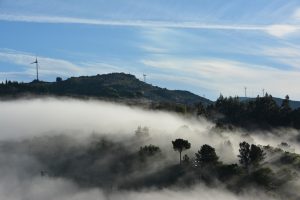New Natures is happy to announce that the PhD level course
New Natures: Histories of Environment and Technology
will be offered in August 2016 through Luleå University of Technology. The instructor for the course will be Dr. Dolly Jørgensen. The course will award 7,5 hp under the Swedish higher education point system.
Goal
Humans are technological creatures. We harness nature for energy, food, protection, leisure, information, and meaning through the deployment of technologies. In so doing, we modify nature in countless ways. Focusing on these new natures allows histories to be written that take into account the complex relationship between nature and technology. The goal with the course is to investigate the historical linkages between environment and technology over time.
The focus is on literature identified as contributing to the field of “envirotech”, which bridges scholarship in the disciplines of history of technology and environmental history.
Organization
The course is organized around four meeting places of environment and technology: water, animals, urban areas, and mega-projects. The course is designed for PhD level students as a literature course in which the student reads the literature each week for four weeks of full time study.
There will be an online discussion forum each week on Monday morning for two hours in which the students are expected to participate in order to share experiences and ideas prompted by the reading. Students will need to have access to a computer with web camera and headset (earphones + microphone) to participate.
Examination
The examination is written and consists of four book reviews. Writing a good book review is a real world skill that professional historians need to master. The student will write one book review for each theme week (choosing one of the two books if two are assigned that week). Two of the reviews must be written in a style suitable for publication in the journal Environmental History (i.e. aimed at environmental historians as the readers); the other two must be written for publication in the journal Technology and Culture (i.e. aimed at historians of technology). See each journal’s guidelines for book reviews for information on the acceptable length, style, and contents.
Literature
Introductory material
Jeffrey K. Stine and Joel A. Tarr, “At the Intersection of Histories: Technology and the Environment,” Technology and Culture 39 (1998): 601-640. Link to journal
James Williams, “Understanding the place of humans in nature,” in Martin Reuss and Stephen Cutcliffe, The Illusory Boundary: Environment and Technology in History (University of Virginia Press, 2010), 9-25.
Paul Edwards, “How to Read a Book, v5.0”, http://pne.people.si.umich.edu/PDF/howtoread.pdf (10 pp.)
Robert Blackey, “Words to the Whys: Crafting Critical Book Reviews,” The History Teacher 27 (1994), 159-166. Also see http://clas.uiowa.edu/history/teaching-and-writing-center/guides/book-review
Theme 1: Water
Richard White, The Organic Machine: The Remaking of the Colombia River (Hill and Wang, 1995) (130 pp.)
Sara Pritchard, “Reconstructing the Rhone: The Cultural Politics of Nature and Nation in Contemporary France, 1945-1997,” French Historical Studies 27.4 (Fall 2004): 765-799. Link to journal
Theme 2: Animals
Dolly Jørgensen, “Not by human hands: five technological tenets for environmental history in the Anthropocene,” Environment and History 20 (2014): 479-489. Link to journal
Anne Greene, Horses at Work: Harnessing Power in Industrial America (Harvard University Press, 2008) (322 pp.)
Etienne Benson, Wired Wilderness: Technologies of Tracking and the Making of Modern Wildlife (Johns Hopkins, 2010) (264 pp.)
Theme 3: Urban
Joel Tarr, “The City as an Artifact of Technology and the Environment,” in Martin Reuss and Stephen Cutcliffe, The Illusory Boundary: Environment and Technology in History (University of Virginia Press, 2010), 145-170
William Cronon, Nature’s Metropolis: Chicago and the Great West (Norton, 1991) (Read Parts I & II only – 259 pp.)
Dale Porter, The Thames Embankment: Environment, Technology, and Society in Victorian London (University of Akron Press, 1997) (319 pp.)
Theme 4: Mega-projects
Ashley Carse, “Nature as Infrastructure: Making and Managing the Panama Canal Watershed,” Social Studies of Science 42 (2012): 539-563. Link to journal
Paul Sutter, “Nature’s Agents or Agents of Empire? Entomological Workers and Environmental Change during the Construction of the Panama Canal,” Isis 98 (2007): 724-754. Link to journal
David Nye, American Technological Sublime (MIT Press, 1994) (362pp.)
Joy Parr, Sensing Changes: Technologies, Environments and the Everyday, 1953-2003 (UBC Press, 2009) (304pp.)
Schedule for the course
Course runs 1-29 August 2016.
Week 1
Online meeting, 1 August, 10:00-11:00 (Central European time) – Course Introduction
Read Introductory material and Theme 1 during the week.
Book review of White due 7 August.
Week 2
Online meeting, 8 August, 10:00-12:00 (CE time) – Discussion of Week 1 reading
Read Theme 2.
Book review of Greene or Benson due 14 August.
Week 3
Online meeting, 15 August, 10:00-12:00 (CE time) – Discussion of Week 2 reading
Read Theme 3.
Book review of Cronon or Porter due 21 August.
Week 4
Online meeting, 22 August, 10:00-12:00 (CE time) – Discussion of Week 3 reading
Read Theme 4.
Book review of Nye or Parr due 28 August.
Online meeting, 29 August, 10:00-12:00 (CE time) – Discussion of Week 4 reading and closing remarks
Registration
The course is free. To register, send an email to Dolly Jørgensen at dolly.jorgensen@ltu.se
